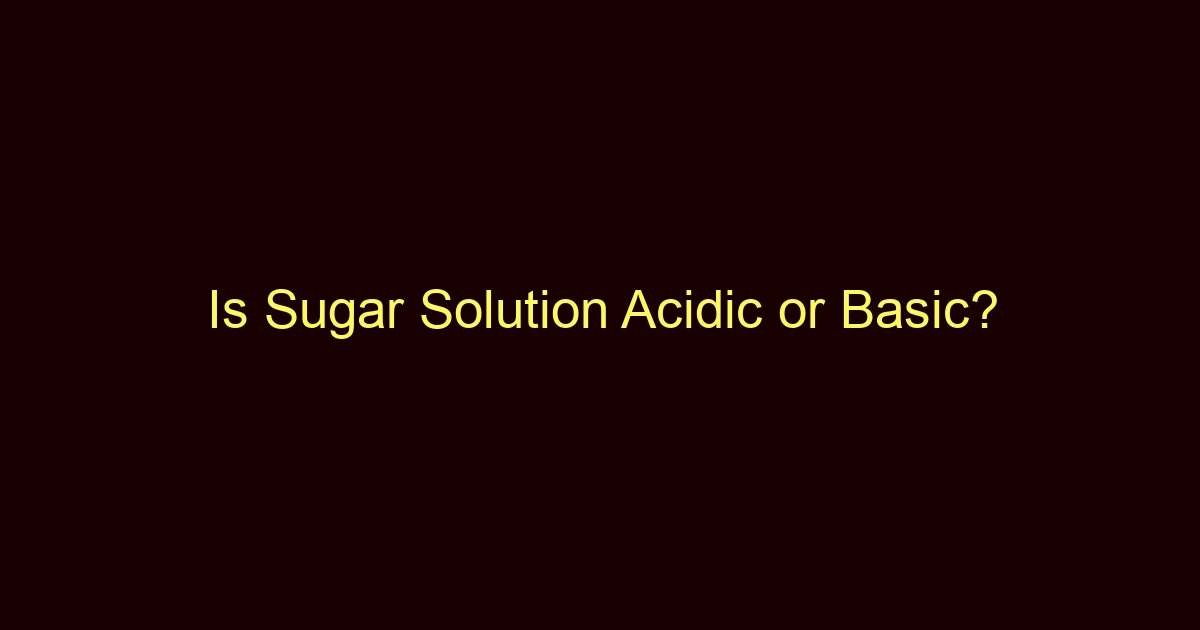Sugar solution is generally neutral to slightly acidic. It does not significantly alter the pH level of a liquid it is dissolved in, but depending on other factors, its pH can range from neutral to mildly acidic.
Sugar solutions are an everyday component in culinary, industrial, and scientific applications. The question about whether a sugar solution is acidic or basic is not just a scientific inquiry but has practical implications as well. For example, understanding its pH level can help in food preservation and flavor enhancement. In this article, we delve deep into the pH spectrum of sugar solutions to answer whether they are acidic or basic.
Is Sugar Solution Acidic?
Sugar solution is generally neutral to slightly acidic.
Explanation
Contrary to popular belief, sugar solutions are generally not acidic enough to cause any concern. The acidic property of a sugar solution often depends on the type of sugar and the liquid in which it is dissolved. For instance, sucrose, the most commonly used sugar, hardly affects the pH level of water when dissolved in it.
That being said, sugar can react with other substances to produce slightly acidic byproducts. When sugar undergoes fermentation, it can create an acidic environment, hence, making the solution slightly acidic. This is why in some applications, like brewing or baking, sugar can indirectly contribute to acidity.
Certain natural sugars, like those found in fruits, are inherently found in acidic environments. However, it’s essential to differentiate between the sugar itself and the medium in which it is found. The sugar is often not the contributor to the acidity but rather a component of a naturally acidic substance.
Is Sugar Solution Basic?
No, sugar solution is not basic.
Explanation
Sugar solutions are not basic; they tend to be neutral or slightly acidic. Unlike alkaline substances such as baking soda or lime, sugar does not have the properties to neutralize acid.
A basic solution is characterized by a higher concentration of hydroxide ions than hydrogen ions. Sugar, being a neutral compound, doesn’t release hydroxide ions when dissolved in water or any other solvent, thereby not making the solution basic.
There’s also the biochemical aspect. In living organisms, sugar metabolism does not result in the creation of alkaline byproducts. Instead, sugars like glucose are broken down in a way that maintains the neutral pH of the biological system, rather than making it basic.
pH Values of Sugar Solution:
The pH value of a standard sugar solution typically hovers around neutral, which is a pH level of 7. However, this can vary depending on external factors like the purity of the water used and the presence of other substances. In industrial applications, where high concentrations of sugar are used, the pH can slightly drift towards the acidic range but not by a significant margin.
Final Thoughts
In summary, sugar solutions are generally neutral to slightly acidic. They neither contribute significantly to acidity nor create a basic environment. It’s important to note that the slight shift towards acidity can occur under specific conditions, like during the fermentation process.
Understanding the pH level of a sugar solution has broader implications, especially in the food industry, where acidity can influence preservation and taste. However, in a standalone state, sugar solutions should not be a cause for concern when it comes to their pH level.

